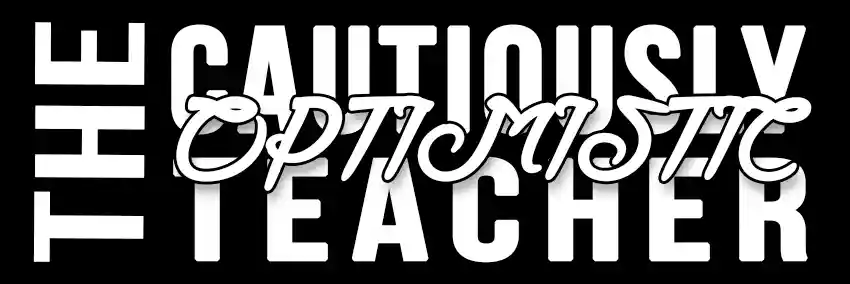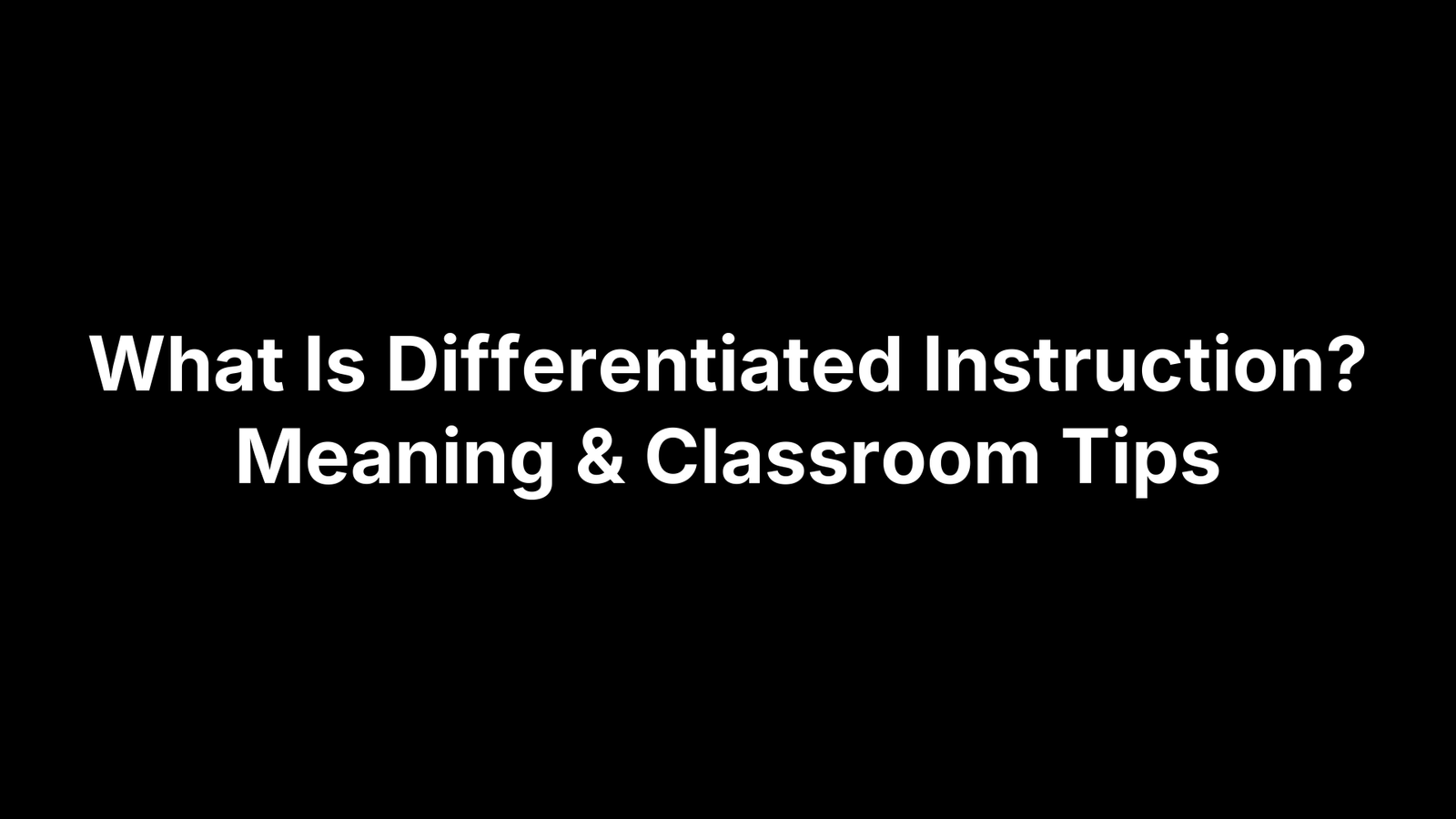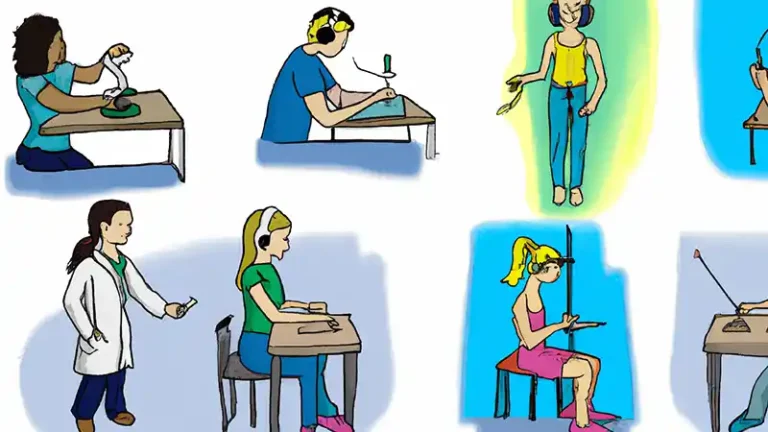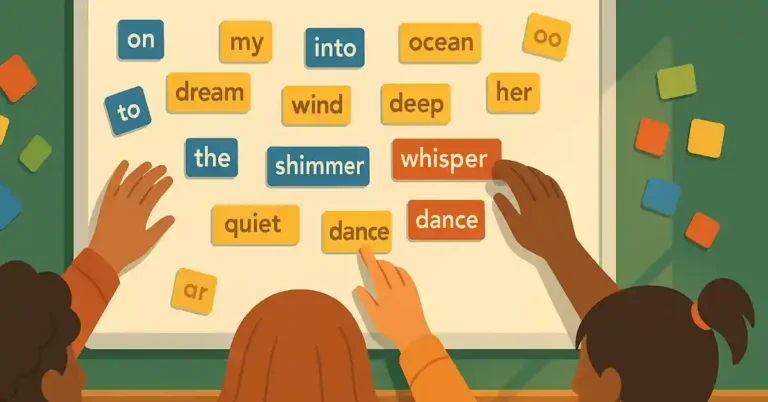What Is Differentiated Instruction? Meaning & Classroom Tips
Differentiated instruction is a flexible teaching approach that adapts content, process, product, and learning environment so every student can achieve the same high-level goals in ways that work best for them. With classrooms spanning languages, learning profiles, and readiness levels, teachers need a plan that honors difference without lowering expectations. Neuroscience confirms that learners process information along unique pathways, while federal and state equity mandates make access to rigorous curriculum non-negotiable.
This article unpacks the approach step by step so you can move from buzzword to daily habit. First, you’ll get a clear definition grounded in research and a reality check on what differentiation is—and isn’t. Next, we break down the four pillars—content, process, product, and learning environment—then show how to match them to student readiness, interests, and profiles. Practical sections on grouping, technology, assessment, and troubleshooting will arm you with ready-to-use templates, while a rapid-fire FAQ clears up lingering myths. By the end, you’ll have a toolkit and confidence to start small, iterate, and see every learner stretch toward ambitious goals.
A Clear Definition of Differentiated Instruction
Textbook authors often describe differentiated instruction as “proactive decision-making that continuously adjusts teaching variables to maximize growth for every learner.” In day-to-day terms, it means the teacher plans several viable paths to the same academic destination before the lesson begins, then fine-tunes those paths as evidence of learning rolls in. Carol Ann Tomlinson popularized the model, drawing on Lev Vygotsky’s Zone of Proximal Development: students learn best when work is just beyond their independent reach but still attainable with the right support.
Crucially, differentiation is not tracking, individualized lesson plans for 30 different kids, or an excuse to dilute rigor. All students aim for the same standards; they simply take different routes, use different tools, or show mastery in different ways. That mindset turns classrooms into engines of equity and inclusion rather than places where “one size fits all” quietly leaves some students behind.
The Essence of Tailoring Instruction
Teachers respond to three learner variables—readiness, interests, and learning profile. They pre-assess skills, form flexible groups, and offer materials calibrated to each student’s current level, all before problems surface. Think anticipatory medicine, not emergency triage.
Research and Policy Context
Meta-analyses show higher engagement and achievement in classrooms using systematic differentiation. The practice dovetails with Universal Design for Learning (UDL) guidelines and fulfills equity requirements in IDEA and the Every Student Succeeds Act, making it both research-backed and policy-aligned.
Why Language Matters
You may also hear adaptive teaching, responsive instruction, or personalized learning. In K–12 discourse, however, “differentiated instruction” remains the umbrella term that signals intentional planning around content, process, product, and environment.
The 4 Pillars: Content, Process, Product, and Learning Environment
If you picture a well-run lesson as a sturdy table, these four pillars are its legs. Most teachers adjust two or three legs at once—rarely just one—because real students come with intertwined needs. Below is a quick tour of how each pillar works and how you can tweak it without rewriting your entire unit plan.
Differentiating Content
Content is the “what” of learning.
Strategies to vary it include:
- Curated readings at multiple Lexile bands
- Podcasts, infographics, and short videos alongside text
- Front-loading vocabulary or background knowledge for newcomers
Example: All students investigate the essential question “How does migration shape culture?” Some read an on-grade article, others analyze a primary-source letter, and another group watches a documentary excerpt—all converging in a shared discussion.
Differentiating Process
Process is the “how.” The same concept can be explored through:
- Think-pair-share, Socratic seminar, or solo journaling
- Graphic organizers or concept mapping for visual scaffolds
- Guided inquiry with teacher prompts or self-directed exploration
Pro tip: Write tiered questions that climb Bloom’s taxonomy, so each group wrestles with appropriately challenging prompts.
Differentiating Product
Product is the “show what you know.” Offering options fuels ownership and rigor.
| Traditional One-Size Project | Differentiated Product Menu |
|---|---|
| Five-paragraph essay | – Podcast episode – Illustrated timeline – Slide deck with speaker notes – Physical model + reflection |
Students still meet the same rubric targets—argument strength, evidence, and accuracy—but arrive there via a medium that plays to their strengths.
Differentiating Learning Environment
The environment shapes mindsets. Simple shifts include:
- Flexible seating or standing desks for kinesthetic learners
- Quiet nooks for focused work and “huddle” zones for collaboration
- Classroom visuals that mirror students’ cultures and languages
A supportive space lowers stress and boosts willingness to take academic risks—key ingredients for deep learning.
Aligning Pillars With Objectives
Start with the standard, pinpoint non-negotiable success criteria, then decide which pillar(s) need adjustment. If vocabulary is the hurdle, tweak content; if stamina is lagging, rethink environment; if analysis skills vary, scaffold process and diversify products. This backward-mapping ensures that every adaptation still drives toward mastery rather than sidestepping it.
Knowing Your Students: Readiness, Interests, and Learning Profiles
Differentiation lives or dies on the quality of information you gather about your class. Guesswork leads to mismatched tasks, frustration, and the myth that “differentiation doesn’t work.” Systematic data collection lets you spot patterns—who’s ready for enrichment, who needs scaffolds, and what sparks genuine curiosity—so every adjustment is intentional rather than improvisational.
Diagnostic and Formative Assessment Tools
Quick, low-stakes checks give you a living snapshot of readiness. Common options include:
- Entry tickets or “cold problems” on prior knowledge
- Skill inventories (reading fluency, math fact grids, language levels)
- Running records or miscue analyses
- Digital polls and live quiz apps for instant item analysis
Chart results in a simple spreadsheet or color-coded seating chart to guide grouping.
Uncovering Student Interests
Motivation accelerates learning. Use:
- Short interest surveys with rating scales and open prompts
- “Curiosity journals” where students jot weekly wonderings
- Two-minute conferences or peer interviews
Fold popular themes—sports analytics, graphic novels, social justice—into examples and project choices to boost buy-in.
Understanding Learning Styles and Modalities
Research warns against locking kids into rigid style labels, yet offering multimodal access remains powerful. Plan lessons that intentionally blend visual supports, oral discussions, tactile models, and movement so students can select the channel that helps them process most effectively.
Building and Using Learner Profiles
Combine readiness data, interest notes, and access needs in a one-page profile. Suggested headings: strengths, stretch goals, accommodations, passions, and preferred collaboration modes. Revisit each quarter—invite students to update it with fresh reflections—then use the profile as a quick reference when crafting groups, tasks, and feedback.
Differentiated Instruction Strategies and Classroom Tips
Theory is great, but Tuesday’s fourth-period class still walks through the door. The ideas below translate the pillars into daily moves you can prep in minutes, not hours. Mix and match—start with one technique, gather evidence, then layer on the next. Over time the routine feels less like a circus act and more like responsive, humane teaching.
Flexible Grouping Techniques
Rigid, semester-long groups kill momentum. Instead, pivot among:
- Homogeneous “skill boost” clusters for targeted mini-lessons
- Heterogeneous “think tank” teams for complex tasks that benefit from varied perspectives
- “Home-base” partnerships that provide a familiar face during quick turn-and-talks
Color-coded cards or digital group generators shave transition time. Rotate membership every one to two weeks so labels don’t stick and social dynamics stay fresh.
Tiered Assignments and Scaffolding
One standard, three access points:
- Foundation Tier – concrete examples, guided outlines, sentence stems
- Core Tier – on-grade prompts, light scaffolds, peer feedback checklist
- Extension Tier – open-ended inquiry, higher DOK verbs, independent research
Write the prompt once, then tweak complexity, resources, and time on task. In a persuasive writing lesson, the foundation group might craft a paragraph using a fill-in graphic organizer, while the extension group analyzes rhetoric in professional op-eds before composing their own.
Learning Stations and Centers
Stations turn a single teacher into a multi-tool. A secondary ELA rotation could look like:
| Station | Time | Focus | Materials |
|---|---|---|---|
| Teacher Table | 12 min | Close reading | Annotated excerpt, highlighters |
| Peer Collab | 12 min | Theme mapping | Sticky notes, chart paper |
| Tech Corner | 12 min | Vocabulary game | Adaptive app, earbuds |
| Independent | 12 min | Choice novel | Reading log, bookmarks |
Post objectives at each station and give a two-minute warning signal to keep the flow crisp.
Leveraging Technology and AI for Differentiation
Adaptive platforms adjust text complexity on the fly, while AI tools—like our free Differentiated Instruction Helper—generate leveled questions or alternative examples in seconds. Screen time matters, so pair digital work with offline reflection journals. Always vet privacy settings and export student data to an in-house drive.
Exit Tickets and Feedback Loops
End class with a pulse check:
- Minute Paper: “One insight, one question” on an index card
- Emoji Meter: Students mark 🤔, 😊, or 🚀 on the board next to their name
- Quick Quiz: Two auto-graded items in a LMS form
Sort responses into three piles—reteach, ready, enrich. Use that snapshot to regroup for tomorrow, proving to students that their feedback actually shapes instruction. Continuous adjustment is the heartbeat of differentiated teaching and the fastest answer to “what is differentiated instruction” in practice.
Planning and Assessment in a Differentiated Classroom
Great differentiation starts on the planning page, not at the moment confusion strikes. When teachers backward-map from standards and use ongoing assessment to fine-tune groups, every adaptation feels purposeful instead of piecemeal. Think of it as a GPS: you program the destination first, then let real-time traffic data suggest alternate routes.
Backward Design With Differentiation in Mind
Begin by unpacking the standard and splitting goals into two bands: “all must” (non-negotiable) and “some will” (extension). Then sketch how each pillar might flex.
| Standard | Evidence of Mastery | Content Tweak | Process Tweak | Product Options |
|---|---|---|---|---|
| Cite textual evidence (RL.8.1) | Quote+explanation in context | Varied Lexile excerpts | Guided vs. independent annotation | Essay, podcast, or comic strip |
A quick planning grid like the one above keeps rigor front and center while clarifying where you’ll differentiate.
Differentiated Formative and Summative Assessments
Formative checks—thumbs-up cards, two-question quizzes, verbal summaries—tell you daily who needs reteaching or enrichment. For unit finals, offer parallel pathways: a lab report, an oral defense, or a multimedia poster can all demonstrate mastery of the same science objectives. Use common scoring criteria so choice never equals easier.
Rubrics and Success Criteria for Multiple Levels
Single-point rubrics do the heavy lifting: one middle “meets” column lists target indicators, with margins for “emerging” and “exceeding.” Language stems help maintain rigor:
- Emerging: “Needs clearer link between claim and evidence.”
- Meeting: “Consistently explains how evidence supports claim.”
- Exceeding: “Integrates counter-evidence and rebuttal.”
Tracking Progress and Data-Driven Adjustments
Whether you favor a color-coded spreadsheet or a binder, log mastery by objective, not percentage. Update after each formative check and schedule a five-minute “data huddle” every Friday to regroup students. Sharing growth charts with families and students turns progress into a collective celebration and reinforces that differentiated instruction is simply responsive teaching done well.
Common Challenges and Practical Solutions
Even veteran teachers sometimes groan when they hear “differentiate.” The fears are real: extra prep, noisy groups, and pressure to cover standards without dumbing things down. The fixes below come straight from classrooms that have survived the learning curve.
Time Management and Lesson Prep
Batch similar tasks. Plan one core lesson, then layer supports or extensions into the same slide deck. Use templates for tiered tasks, and let AI tools crank out leveled texts. Students can assemble station materials as a warm-up, saving you minutes.
Classroom Management in Multi-Level Groups
Teach procedures like athletes rehearse plays. Post rotation timers, role cards, and voice-level cues. Preview expectations with quick visuals or demos. When noise rises, pause, praise groups on task, and reset; positive narration beats lecturing every time.
Avoiding “Watered-Down” Curriculum
Different materials do not mean different standards. Write your success criteria first, then design low-floor/high-ceiling tasks that use Depth of Knowledge verbs (analyze, design, justify). Graphic scaffolds help struggling students reach the same verbs rather than swapping them for simpler ones.
Collaboration With Colleagues and Co-Teaching
Partnering multiplies brainpower and halves workload. In your PLC, trade leveled texts or station blueprints. During co-teaching, run parallel groups or a teacher-station/independent-station model so every student gets small-group time without extending the period.
FAQs About Differentiated Instruction
Still have questions? Below are quick, research-backed answers to the most common concerns teachers Google after the bell rings. Skim, bookmark, and share with colleagues who wonder whether differentiated instruction is realistic—or just another educational buzzword.
Is Differentiated Instruction the Same as Individualized Learning?
Not quite. Differentiated instruction keeps a shared learning goal and time frame for the whole class, but offers varied paths and products based on readiness, interests, and profiles. Individualized learning customizes pacing, objectives, and sometimes curriculum for each student—think IEPs or self-paced online courses.
Can Differentiation Work in Large Classes?
Yes, if you lean on systems. Use tech-assisted pre-assessments to form fluid groups, assign roles to streamline collaboration, and rotate teacher-led stations so every student gets small-group time at least weekly. Peer tutors and clearly posted routines keep 30-plus students productively engaged.
How Do I Differentiate Without Lowering Standards?
Change the scaffolds, not the target. Start with the grade-level standard, then vary input (leveled texts), process (think-alouds vs. independent synthesis), or product (video essay, live debate). Rubrics anchored to the same success criteria ensure rigor even when support levels differ.
Which Grade Levels and Subjects Benefit Most?
All of them. Kindergarten teachers differentiate phonemic-awareness games; high-school calculus teachers tier problem sets; art, PE, and CTE classes offer choice boards and flexible grouping. Whenever students arrive with different skill sets—and they always do—differentiation helps everyone reach the finish line together.
Bringing It All Together
Differentiated instruction isn’t a silver-bullet program; it’s a mindset that says every learner can hit demanding standards when we plan multiple routes and listen to real-time feedback. Start small: tweak reading materials for tomorrow’s lesson or swap a one-size project for a choice board. Then build outward—use formative data to regroup, layer on tech for efficiency, and invite students to co-create their learning environment.
When proactive planning, flexible execution, and continuous reflection work in concert, equity stops being a slogan and becomes daily practice. Ready to give it a whirl? Try our free Differentiated Instruction Helper tool, experiment with one pillar this week, and watch engagement climb. For more resources, inspiration, and teacher-tested tips, subscribe to the weekly newsletter at The Cautiously Optimistic Teacher. Your future self—and your students—will thank you.







